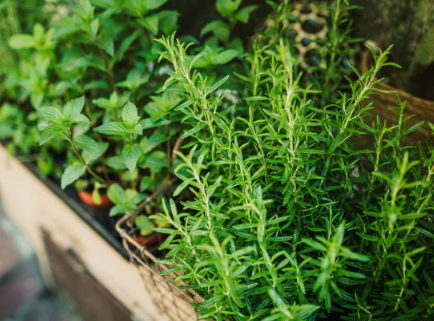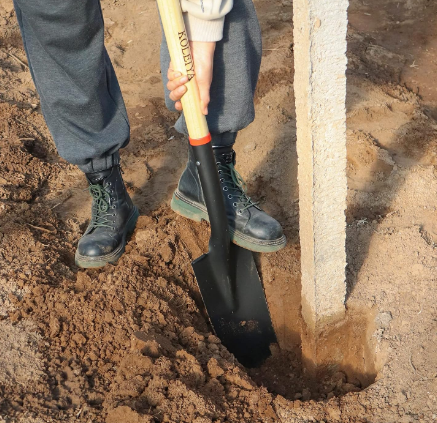
Experience the Nutritional Powerhouse of Nature Jim’s Sprouts Wheatgrass Seeds
January 16, 2025
The Best Time to Water Your Plants
January 23, 2025Organic gardening is more than just growing food without the use of synthetic fertilizers and pesticides. It’s a holistic, holistic approach to gardening that sustains and supports healthy, balanced ecosystems and biodiversity, both inside and outside your own yard.
Whether you’re a first-time gardener, intend to grow everything organically in the first place, or you’re transitioning from traditional gardening using pesticides and fertilizers to organic farming methods, here are the steps you can take in organic gardening.

Why Start Organic Gardening?
There are many compelling reasons for organic gardening. When you eat your own organic fruits and vegetables, you avoid the pesticides you use to grow your food. Broad-spectrum synthetic pesticides also indiscriminately eliminate all insects (pests and beneficial insects) in the garden, which can wreak havoc on biodiversity and local food webs.
Synthetic fertilizers, which are found in much higher concentrations than organic fertilizers, often cause nitrogen and phosphorus runoff, pollute natural water sources and cause algae overgrowth in water bodies.
Organic gardening allows crops to grow naturally, using alternative methods of pest control and fertilization, without the same risks as non-organic methods.
Start Your Organic Garden
Improved Clay Bowl
It all starts with the soil. In order to prepare the crop for planting, it needs to be corrected with organic matter, which can be done using a rotary cultivator or shovel. When a farm wants to be USDA Organic, only acceptable plant and animal material is allowed to be added to the soil for a three-year period, including raw animal manure, composted plant and animal material, and uncomposted plant material.

As a home gardener, you are not bound by these rules or long frames, and the amount of time you should wait also depends on what was going on before the location. If it’s a lawn that is often treated or farmland that is often treated in large quantities with synthetic chemicals, then you need to wait longer than if the land was cleared for use in the vegetable garden that was previously untouched.
Choose Simple Crops
When choosing a crop for your first organic gardening season, it’s important to start with a simple crop. Skip any crops that are highly susceptible to pests or diseases, such as cauliflower and broccoli. Once you have some experience with the pests that appear in your garden and how to get rid of them organically, you can plant them later.
Have Your Supplies Ready
Research and prepare suitable organic fertilizers and any other recommended products needed to protect your plants, such as row mulching and organic pesticides.
Follow the Rules of Gold Gardening
Before you start, take the time to test your soil. By taking a soil sample to your local university branch, you’ll learn what the soil is made of – pH and what nutrients are available in the soil. The soil test report provides recommendations on how to improve the soil to ensure it meets the nutrient needs of the garden. Once you know the composition of your soil, you can determine if you need to improve it organically before the growing season begins.
As with traditional gardening, it’s crucial to follow crop rotation rules to prevent pests and diseases. And, although it’s less based on hard facts, it helps to understand the interactions between plants, so familiarize yourself with companion planting.

Attract Pollinators
Make sure to plant pollinator flowers in a timely manner so that they bloom at the same time as plants that need to be pollinated, such as zucchini, cucumbers, and pumpkins, to attract bees and other pollinators.
Take Care of Your Garden
Keep your plants healthy by leaving enough space between plants to maintain good air circulation (to prevent the spread of fungal diseases) and by weeding, watering, and fertilizing regularly. Consider installing drip irrigation to avoid splashing soil and water on plants when watering, which can lead to disease.
Traditional Seeds Vs. Organic Seeds
Organic seeds tend to be more expensive than traditional seeds, but seed companies often sell both types. There are two advantages to using organic seeds: first, organic seeds are grown in accordance with stricter regulations on the use of agrochemicals, so by purchasing organic seeds, you can indirectly contribute to the preservation of native habitats, waterways, and local ecosystems. In addition, organic seeds have been developed to work best in organic gardens in terms of yield and disease resistance.
Organic Fertilization Methods
There are plenty of organic fertilizers on the market, from fish milk to blood meal. Which commercial fertilizer to use, when, how much, and how often depends on the crops you grow. The Institute for the Review of Organic Materials (OMRI), an international non-profit organization, publishes an annual list of organically produced products. You can select a product from the list or check if the bottle or bag of the product has an “OMRI Listed” label.

Organic Pest Control Programmes
In organic gardening, two rules apply as in traditional gardening: the use of organic or conventional pesticides should always be a last resort. Second, never use any product unless you know what you’re fighting against. Using any pesticide indiscriminately can do more harm than good.
Neem oil and diatomaceous earth, although organic products, are quite powerful and should be used with the same care as any other pesticide. Usually, beneficial insects such as leafcutter bees cause minor damage to the plant, which is purely aesthetic and does not require any treatment at all. Even though the product is labeled as an organic pesticide, it can still harm or kill beneficial insects. Make sure to use organic pesticides as directed on the label.
Tip: Once a pest problem has been identified, there are many different organic pest control options. Just like fertilizer, select products based on the OMRI list.
Organic Composting Option
Composting is an important part of organic gardening. There are two things to keep in mind, though. Mature compost is an excellent way to add organic matter to the soil, but because its nutrient composition is unpredictable, you shouldn’t rely on it alone for fertilization. For successful organic gardening, you’ll still need organic fertilizers with a stable NPK ratio and other micronutrients that your plants may be lacking.
Consider what you’ve added to your compost bin. You don’t have to just fill it with organic vegetable scraps, as any chemicals used in conventionally grown produce will break down during the composting process. Note, however, that there are indeed four persistent herbicides left in the compost.
Warning: To avoid contaminating the compost, do not use any traditional hardwood herbicides on your lawn and elsewhere in the landscape, and do not compost grass clippings if you must. Also avoid using composting facilities for composting, as it can be contaminated.
Don’t Limit Organic Gardening to Food Only
An organic vegetable garden is a great place to start, but sustainable gardening and caring for the environment shouldn’t stop there. If you have a completely organic vegetable garden next to a lawn that has been treated with herbicides to control weeds, then it is not good for nature.
Reconsider the size of the lawn and perhaps replant with native grass. Add more native plants to your landscape, not only do they adapt better to the local climate, but they’re also essential for insect survival. Establishing a pollinator garden and growing milkweed for monarch butterflies is just one of the many things you can do to support biodiversity and healthy local ecosystems and vegetable gardens at the same time.



